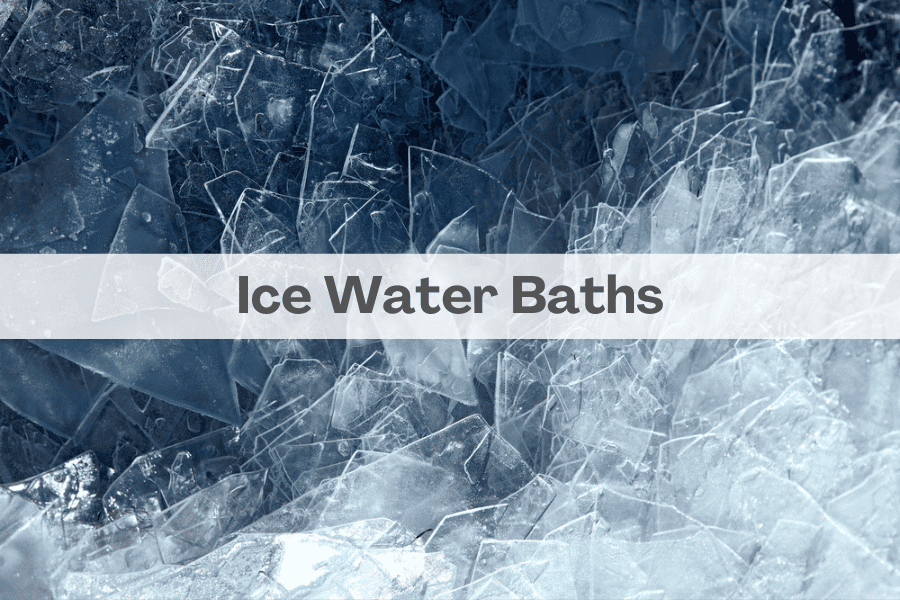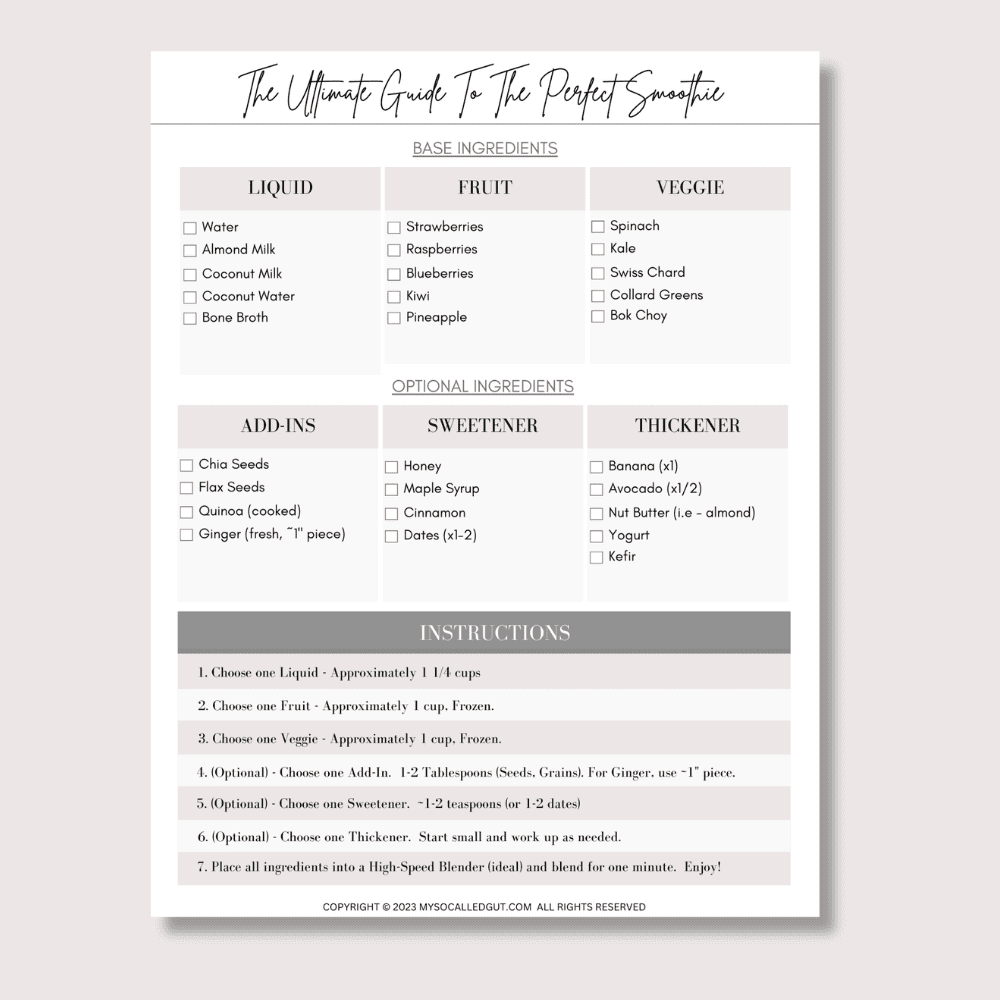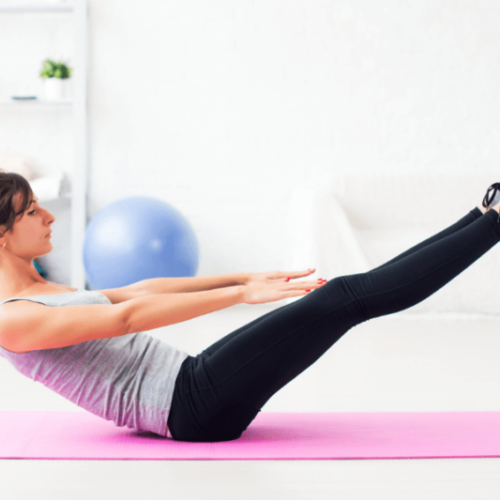Are you as intrigued as we are about this new ice water bath trend? Great! We've got you covered.
As someone who has been both fascinated and terrified about the thought of plunging into freezing cold water, I knew that I HAD to dig deeper and see what all of the fuss was about. After all, every person who has tried a cold plunge tub can't seem to get enough of them.

In this blog post, we’ll uncover the numerous benefits of ice water baths and alternative cold therapy options, as well as essential safety precautions and best practices to ensure a safe and stimulating experience.
By the end of this blog post, you’ll have a deeper understanding of why your should consider trying ice water baths, how they work, and the incredible benefits they offer.
So let’s dive in and explore the world of cold water therapy!
This post is all about "Ice Water Baths".


Key Takeaways
- Experience the life-enhancing benefits of Ice Water Baths - increased energy, improved sleep & muscle recovery!
- Explore alternative cold therapies such as Cold Showers, Contrast Water Therapy, and the Wim Hof Method for added benefits.
- Follow safety precautions and best practices to ensure a successful experience with ice water baths.
Understanding Ice Water Baths
Cold water immersion, or the practice of submerging the body in cold water, has gained popularity in recent years as athletes and health enthusiasts alike seek new ways to improve muscle recovery and overall well-being. Lately so many more people have started to take notice of this up-and-coming therapy and have been trying out this new ice bath trend.
Personally, I absolutely HATE being cold so this new Cold Plunge Tub trend had me both appalled and highly fascinated at the same time. Being someone who regularly takes scalding hot baths (almost) daily, the thought of jumping into water that actually has ice in it was a pretty hard "no" for me. Until it wasn't.
I couldn't help going back to this topic time and time again, until I finally decided to try it for myself.
I started with a cold shower, followed by a VERY cold bath, and then eventually tried the "cold tub" experience. Soon, I started to become hooked due to all of the positive effects that I started seeing as a result of my exposure to ice water baths.
You see, cold water swimming and ice baths are some of the most exciting forms of cold water therapy, offering a controlled environment where the temperature can be tailored to your liking, including ice-cold water.
The mechanics of ice baths are intriguing. Upon submersion in cold water, blood vessels contract, channeling blood flow towards essential organs and facilitating the removal of waste products and reduction of inflammation.
This process is particularly beneficial for muscle recovery, as it helps reduce delayed onset muscle soreness and promotes faster healing after intense workouts.
What is an Ice Water Bath?
An ice water bath (sometimes also known as a cold plunge tub), is a type of cold water immersion therapy that can enhance blood flow and decrease inflammation, thereby revitalizing and energizing the body. Submerging yourself in a cold plunge involves surrounding yourself in water which has a temperature of around 32 to 39 degrees Fahrenheit. This is low enough for ice to form.
The ideal duration for an ice bath may vary depending on factors such as overall body mass, muscle mass, and fat mass. Research has shown that starting with a brief (yet intense) three minutes in the water is a good target time for ice water baths. From there, you can gradually add more time, but try to keep it at 10 minutes or less for safety reasons.
For those unacquainted with ice bathing, starting with cold showers is a good way to experience some benefits and slowly progress towards full immersion.
How Ice Water Baths Work
Cold water therapy, encompassing ice baths, can provide several benefits for muscle recovery and pain relief. Some of the benefits include:
- Augments circulation
- Diminishes inflammation
- Facilitates muscle recovery
- Alleviates pain
Ice baths also significantly benefit the heart and blood vessels. Cold water therapy has been shown to strengthen blood vessels, potentially improving circulation by increasing their capacity to circulate blood throughout the body.
This positive effect on the circulatory system can also contribute to pain relief by slowing down nerve conduction speeds and reducing excitability, resulting in a decrease in perceived pain.
9 Benefits of Ice Water Baths
The benefits of ice baths extend far beyond muscle recovery. From increased energy to improved sleep, these chilly plunges offer a myriad of advantages that can enhance your overall well-being.
In the upcoming sections, we’ll explore the top 9 benefits of ice water baths, delving into the science behind each and their positive effects on your life. Let’s begin!
1. Increased Energy
Feeling sluggish after an intense exercise session? Ice water baths can give you the energy boost you need to power through the rest of your day. By triggering the release of hormones like norepinephrine, ice water baths can provide you with a surge of energy and even improve your mood.
In addition to increased energy, ice water baths can help regulate your central nervous system, providing greater mental clarity and focus. With these benefits, you may just find yourself reaching for an ice bath instead of that afternoon cup of coffee!
2. Better Muscle Recovery
Enhanced muscle recovery is one of the predominant reasons people resort to ice water baths. By constricting the blood vessels and encouraging the body to pump more oxygenated blood to the muscles, ice water baths help reduce inflammation and speed up the muscle recovery process.
This efficient recovery process is particularly beneficial for athletes and fitness enthusiasts, as it allows for quicker return to training and reduces the risk of overtraining or injury.
So, the next time you’re feeling sore after an intense workout, consider consulting a sports medicine physician or taking an icy plunge to help your muscles bounce back faster.
3. Reduced Soreness
Muscle soreness is a common side effect of exercise, particularly after intense or new workouts. Ice water baths can help alleviate this discomfort by reducing inflammation and swelling in the muscles. Additionally, cold water immersion helps to reduce lactic acid buildup, a major contributor to muscle soreness, allowing you to get back to your routine more quickly.
Not only do ice water baths help reduce muscle soreness, but they can also help prevent injuries by reducing muscle fatigue and stiffness. This makes ice water baths a valuable tool for both recovery and injury prevention.
4. Mood Enhancement
Did you know that ice water baths can also give your mood a lift? By triggering the release of endorphins and other neurotransmitters, such as norepinephrine, ice water baths can provide natural antidepressant effects and improve overall mood.
With these mood-enhancing benefits, you may find yourself feeling more positive and resilient in the face of life’s challenges. So, the next time you’re feeling down, consider taking an ice water bath to give your mood a boost.
5. Stress Reduction
While stress is an inevitable aspect of life, ice water baths can assist in managing it better. By providing a distraction from stressful thoughts and activating the parasympathetic nervous system through the physical sensations of cold water, ice water baths can help reduce stress levels.
Additionally, cold water immersion promotes deep breathing, which can further reduce stress and activate the body’s relaxation response. Experiencing the cold shock response during this process can also help keep stress at bay. So, the next time you’re feeling overwhelmed, consider taking an ice water bath.
6. Improved Sleep
Adequate sleep is vital for general health and well-being, with ice water baths contributing to its improvement. By reducing wake after sleep onset (WASO), ice water baths can help you fall asleep more easily and stay asleep throughout the night.
In addition to improving sleep efficiency, cold water immersion can also help lower cortisol levels, the hormone associated with stress. This can help your body relax and set the stage for a good night’s rest.
7. Immune System Boost
A robust immune system is crucial in warding off diseases and ensuring overall health. Ice water baths can give your immune system a boost by increasing red and white blood cell count and activating natural killer (NK) cells.
With these immune-boosting ice bath benefits, ice water baths can help your body fight off infections more efficiently, keeping you healthier and more resilient in the long run.
8. Improved Cardiovascular Health
Ice water baths aren’t just good for your muscles, they can also improve cardiovascular health. By constricting and dilating blood vessels, ice water baths provide a workout for the circulatory system, promoting better overall cardiovascular function.
The benefits of improved cardiovascular health include enhanced circulation, reduced inflammation and swelling, and lowered blood pressure. However, it’s essential to consult with a healthcare professional before engaging in ice water baths if you have preexisting cardiovascular diseases or high blood pressure.
9. Fat Burn Fat
Aspiring to lose weight? Ice water baths can be beneficial in this regard too! By activating brown fat and boosting metabolism, ice water baths can help your body burn fat more effectively.
In addition to fat-burning benefits, cold water immersion has also been shown to provide protective benefits against insulin resistance and diabetes. So, if you’re looking for an unconventional way to aid in weight loss, consider adding ice water baths to your routine.
Alternative Cold Therapy Options
Although ice water baths are a potent form of cold therapy, other alternatives exist for those interested in exploring cold water therapy. Some alternative options include:
- Simple homemade ice packs
- Cold showers
- Cryotherapy chambers
- Cold water immersion tanks
- The Wim Hof Method
There are numerous options to choose from when it comes to cold water therapy.
In the subsequent sections, we’ll delve into three popular alternate cold therapy options, each providing distinct benefits and experiences. So, whether you’re just starting your cold therapy journey or looking for new ways to reap the benefits of cold exposure, there’s something for everyone!
Cold Showers
Cold showers can be a great starting point for those new to cold water therapy, and is where I started my journey with Ice Water Baths. It's a free way to exposure you to this therapy and allows you to "test the waters", no pun intented.
Some benefits of cold showers include:
- Boosting circulation
- Easing muscle soreness
- Protecting against dry skin
- Elevating your mood
However, while cold showers provide some benefits, they may not be as effective as ice water baths for muscle recovery and inflammation reduction.
That being said, cold showers can still be a valuable addition to your self-care routine and an excellent introduction to cold water therapy.
Contrast Water Therapy
Contrast water therapy, also known as contrast bath therapy, involves alternating immersions in warm and cold water. This exciting therapy method offers a range of benefits, such as reducing pain and aiding muscle recovery.
This is another great method that I have experimented with from time and time again. There is a spa nearby that offers both hot and cold plunge tubs, and where I first tested this Contrast Water Therapy.
Needless to say, I am pretty sure that I had the best night of sleep EVER after a couple hours of hot and cold tub plunging.
Blood flow and oxygen delivery to tissues can be increased through the use of hot and cold water. This happens due to a pumping effect created by repeatedly constricting and opening blood vessels. This process can help reduce swelling, improve muscle function, and promote healing.
The Wim Hof Method
The Wim Hof Method, developed by Dutch extreme athlete Wim Hof, combines cold water therapy, breath work, and commitment practices to offer a range of potential benefits.
I was first introduced to the Wim Hof Method after watching Season 1, Episode 2 ("Cold Comfort") of the Goop Lab series on Netflix. I was intrigued. It was actually what triggered my interest in the whole topic of Ice Water Baths.
Being someone who absolutely LOATHES being cold, the idea of plunging into ice cold water used to very much be my real-life nightmare. However, after watching this episode and digging a little deeper into the science behind it, I started to become hooked!
By incorporating these three components, the Wim Hof Method aims to increase energy, reduce stress, and improve sleep, among other benefits.
Three Components of the Wim Hof Method:
1. Third Eye Meditation
This is a spiritual practice that focuses on activating the 'ajna' or 'third eye' chakra, believed to be the seat of inner wisdom and intuition. This form of meditation seeks to enhance mental clarity, spiritual growth, and psychic abilities, guiding individuals towards a deeper understanding of their inner self and the universe.
2. Cold exposure
The Cold Exposure is a pivotal element in the Wim Hof Method. It entails regular exposure to cold, such as taking cold showers or swimming in icy waters. The purpose of this practice is manifold; it helps to boost the immune system, enhance mental wellbeing, increase energy levels, and improve sleep quality.
Cold Exposure stimulates the vascular system, training it to become more efficient in circulating blood and oxygen throughout the body. It also initiates a beneficial stress response, conditioning the body to better handle physical and mental stressors.
3. Breath Work
The Wim Hof Method also incorporates a unique breathing technique that involves cycles of controlled hyperventilation followed by breath retention. This practice is believed to increase oxygen concentration within the body, thereby enhancing physical performance, reducing stress levels, and promoting a state of mental clarity and focus.
If you’re interested in exploring a more holistic approach to cold water therapy, the Wim Hof Method could be an excellent option. By combining cold exposure with breathwork and commitment practices, you’ll be able to tap into your body’s full potential and experience the incredible benefits of cold therapy.
Safety Precautions and Best Practices
Like any health and wellness regimen, adhering to safety measures and best practices is crucial when undertaking ice water baths or other forms of cold water therapy. Ensuring a safe and effective experience will help you get the most out of your cold therapy sessions and prevent potential risks.
In the subsequent sections, we’ll highlight the significance of gradual acclimation and progression, in addition to guidelines for duration, frequency, and temperature, to guarantee a fruitful and pleasant ice water bath experience.
Gradual Acclimation and Progression
Gradual acclimation and progression are essential when introducing ice water baths into your routine. This process allows you to become more resilient and tolerant to cold temperatures over time, ultimately improving your overall experience with cold water therapy.
By gradually increasing the duration, intensity, or exposure to the cold water, your body will become more accustomed to the sensation, allowing you to tolerate colder temperatures and reap the full benefits of cold water exposure, such as ice water baths.
Duration, Frequency, and Temperature Guidelines
To ensure a safe and effective ice water bath experience, it’s important to follow guidelines for duration, frequency, and temperature. Start with a temperature that is uncomfortable but safe, such as 55 degrees, and gradually expose your body to colder temperatures as you become more comfortable.
Aim for two or three ice water baths per week, starting with shorter sessions of 3 minutes or less. With time and practice, you’ll be able to increase your tolerance and stay in longer, maximizing the benefits of your ice water baths.
Summary
In conclusion, ice water baths offer a multitude of benefits, from improved muscle recovery and reduced soreness to increased energy and better sleep. By following safety precautions and best practices, you can ensure a safe and enjoyable cold therapy experience.
So whether you’re a seasoned athlete looking to enhance your recovery routine or simply seeking a new way to boost your overall well-being, consider taking the plunge into the invigorating world of ice water baths and cold therapy. Your body and mind will thank you!
Frequently Asked Questions
Is it healthy to bathe in ice water?
Ice baths may help reduce inflammation, numb pain receptors, relieve muscle tension, and improve skin condition.
However, there’s no official recommendation for how to take an ice bath, and they can pose a risk to people with certain conditions. Therefore, it is important to consider the potential risks before engaging in an ice bath. Always consult your medical professional with any concerns with using ice water baths as therapy.
How long should you bathe in ice water?
Listen to your body and start slowly. It’s generally recommended to take an ice bath for 3 minutes to start. You can gradually work up from there, but it is often advised to not exceed 10 minutes.
Always listen to your body and remember to consult a healthcare expert if you have any concerns.
What are the benefits of ice water bath?
Taking an ice bath offers numerous benefits, including reducing inflammation and soreness, aiding exercise recovery, lowering core body temperature, boosting the immune system, improving mental health, enhancing recovery from exercise, and helping to build resilience.
How often should I take an ice water bath?
It is generally recommended to take an ice water bath daily or multiple times a week. As with most things, you should always best to listen to your body to see how it responds to the ice water bath before repeating the process.


